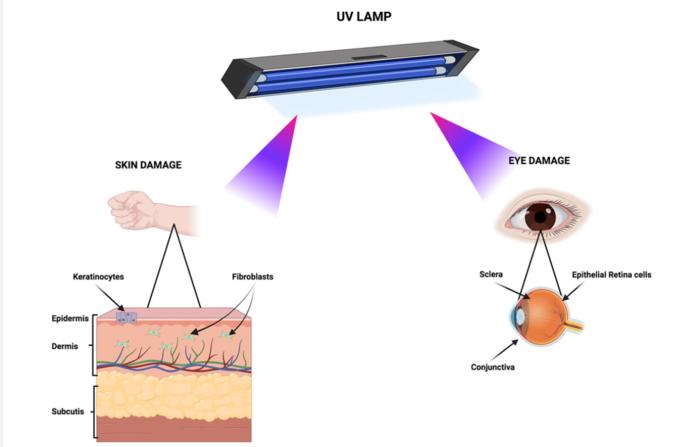Germicidal lamps using ultraviolet C (UV-C) radiation may pose health safety issues, according to a biomolecular analysis of their effects on apoptosis and senescence.
These lamps, which are designed to sanitize the air, objects, and surfaces, gained popularity for domestic use during the COVID-19 pandemic.
In a new study, researchers from the University of Campania Luigi Vanvitelli, Regional Public Health Laboratory in Siena, Italy, ASL Napoli 1 Centro P.S.I. Napoli Est-Barra, and Temple University performed a series of investigations to understand the biological repercussions of UV-C radiation exposure from readily available domestic lamps.
They found that epithelial retinal cells exhibited heightened sensitivity, marked by substantial apoptosis. In contrast, keratinocytes demonstrated resilience to apoptosis even at elevated UV doses, though they were prone to senescence. Meanwhile, fibroblasts displayed a gradual amplification of both senescence and apoptosis as radiation doses escalated.
“In summary, despite the potential benefits offered by UV-C in deactivating pathogens like SARS-CoV-2, it remains evident that the concurrent risks posed by UV-C to human health cannot be ignored,” the study authors conclude in Aging.
PHOTO CAPTION: Figure 1. Primary biological targets of UV exposure. The cartoon depicts the tissues and cell types susceptible to damage from UV lamp irradiation. Created with BioRender.
PHOTO CREDIT: 2024 Alessio et al.


